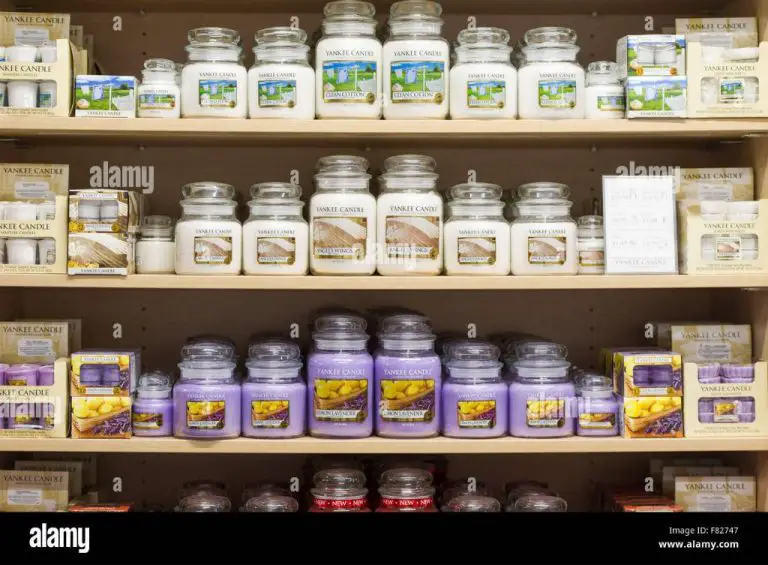Why Use Soy Wax Instead Of Paraffin Wax?
Candle making dates back thousands of years, with various types of waxes used throughout history. In modern times, the two most common waxes for candle making are paraffin wax and soy wax.
This article provides a detailed comparison of paraffin wax and soy wax, examining the differences in their production, performance, environmental impact, availability and cost. The goal is to help candle makers understand the key distinctions between these two popular waxes in order to determine which is better suited for their needs.
What is Paraffin Wax?
Paraffin wax is a white or colorless soft, solid wax derived from petroleum. It is made from the sludge that remains after crude oil is refined into gasoline and other fuels. Through solvent extraction and the removal of oil residues, this sludge is purified into paraffin wax.
Paraffin wax is composed of saturated hydrocarbons, with most of them containing anywhere from 20 to 40 carbon atoms. It has a melting point that ranges from about 130 to 155°F (54 to 68°C).
Some common applications for paraffin wax include candles, cosmetics, polishes, electrical insulators, and food products. It is also commonly used by taxidermists to preserve animal specimens.
What is Soy Wax?
Soy wax is a natural vegetable wax made from soybean oil. Through hydrogenation, soybean oil is turned into a solid wax substance that resembles paraffin wax. The hydrogenation process involves adding hydrogen atoms to the soybean oil molecules, converting the unsaturated fats into saturated fats and turning the oil into a solid at room temperature.
Unlike paraffin wax which is a petroleum byproduct, soy wax is made entirely from soybeans, a renewable and sustainable crop. Soybeans are grown on farms, harvested, and processed into soybean oil which can then be turned into soy wax.
The use of soybeans, an agricultural crop, makes soy wax a natural, plant-based alternative to paraffin wax. Soy wax is biodegradable and environmentally friendly since it comes from a renewable resource.
Paraffin Wax Drawbacks
Paraffin wax comes with some notable drawbacks that make soy wax an appealing alternative. Paraffin wax is derived from petroleum, so it is not a renewable resource. Petroleum is a finite fossil fuel that is extracted from the earth in environmentally disruptive ways. Reliance on petroleum creates sustainability issues and leaves us dependent on this non-renewable resource.
Additionally, burning candles made from paraffin wax produces more soot than soy wax candles. The soot released from paraffin candles can dirty walls and ceilings, requiring more cleaning. The soot may also trigger respiratory issues in some people. Soy wax has a much cleaner burn, producing less soot. Its natural origins from soybeans give it environmental advantages over petroleum-based paraffin.
Soy Wax Benefits
Soy wax offers a number of compelling benefits that make it an attractive alternative to paraffin wax for candle making and other applications:
Made from Renewable Soybeans
One of the biggest advantages of soy wax is that it comes from a renewable resource – soybeans. Soybeans can be grown quickly and replanted season after season. This makes soy wax a much more sustainable ingredient than paraffin wax, which is derived from petroleum and fossil fuels.
Produces Less Soot
When burned, soy wax produces very little soot and virtually no petroleum byproducts. This gives soy candles a cleaner burn compared to paraffin alternatives. Less soot also means less mess from the candle. The cleaner burn makes soy wax ideal for containers and votives.
Paraffin Wax vs Soy Wax Performance
When comparing the performance between paraffin wax candles and soy wax candles, there are a few key factors to consider:
Burn time – Paraffin wax candles tend to burn longer than soy wax candles. The dense molecular structure of paraffin allows for a longer burn time. Soy wax has a lower density, so it burns faster than paraffin. Most paraffin candles will burn around 8-12 hours, while soy wax candles burn for 4-6 hours.
Fragrance retention – Soy wax has superior fragrance retention compared to paraffin wax. The natural density of soy wax allows it to retain scent much better. Paraffin wax candles tend to burn off scent quickly as the candle burns. With soy wax, the fragrance remains consistent from first light to finish.
Wax pool – Paraffin wax tends to pool wax unevenly as it burns, leading to rim effects around the edge of the candle. Soy wax has a memory effect, so it maintains a consistent wax pool without too much rim effect.
Cleanup – Paraffin wax drips and spills can be difficult to clean. Soy wax is much easier to clean up, since any spills or drips easily wash away with soap and water.
Overall, soy wax performs very well compared to paraffin, with excellent fragrance throw and a clean burn. However, paraffin wax does have an advantage when it comes to burn time. The choice between the two waxes depends on the specific needs and performance required.
Environmental Impact
One of the biggest differences between paraffin wax and soy wax is their environmental impact. Paraffin wax is derived from petroleum, a non-renewable resource. The extraction and refining of petroleum requires a lot of energy and creates pollution. There are also risks of oil spills during extraction and transportation which can be devastating to ecosystems.
In contrast, soy wax is made from soybean oil, a renewable and sustainable crop. Soybeans absorb carbon dioxide as they grow, offsetting some of the CO2 released during processing. The carbon footprint of soy wax is estimated to be half that of paraffin wax. Soy wax is also biodegradable, unlike paraffin which takes decades to decompose. As consumer demand for eco-friendly products grows, soy wax offers a more sustainable alternative for candles and other wax products.
Cost Comparison
When it comes to raw material and production costs, soy wax has a clear advantage over paraffin wax. Paraffin wax is derived from petroleum, so its cost is tied directly to unpredictable crude oil prices. Global events can cause spikes in oil prices, driving up the cost of paraffin wax. In contrast, soy wax is made from soybeans, an agricultural crop with more stable pricing.
Additionally, the process of refining paraffin wax from crude oil is highly complex and energy intensive. Specialized equipment and facilities are needed to extract and purify paraffin wax. Soy wax, on the other hand, is made using more straightforward methods like pressing, extraction or hydrogenation of organic soybean oil. This simpler production process results in lower capital costs for soy wax manufacturers.
When combining raw material and production expenses, paraffin wax is estimated to cost 20-30% more than soy wax. Large scale wax buyers may pay upwards of $2.00 per pound for paraffin, compared to $1.50 or less for soy. With wax making up a significant portion of the total cost for candles and other wax products, this difference really adds up. Soy wax gives manufacturers, retailers and consumers cost savings over paraffin in the long run.
Availability
Both paraffin wax and soy wax are readily available for purchase online and in arts and crafts stores. However, there are some key differences when it comes to sourcing the raw ingredients.
Paraffin wax is derived from petroleum, a non-renewable resource. Petroleum must be drilled or extracted from the earth in environmentally disruptive ways. The supply of petroleum is limited and subject to global geopolitics.
In contrast, soy wax is made from soybeans, a renewable and abundant crop. Soybeans are grown annually across the world, with the top producers being the United States, Brazil, Argentina, China and India. The supply of soy wax is much more stable and sustainable compared to paraffin wax.
Additionally, soy wax can be produced domestically, supporting local economies. Paraffin wax is largely imported and sourced from abroad. This can lead to greater costs and unpredictability.
When it comes to availability and sourcing, soy wax has the advantage over paraffin wax. Soy wax comes from a renewable resource and has a more stable and predictable supply chain.
Conclusion
In summary, soy wax has numerous advantages over paraffin wax. Soy wax is a renewable, environmentally friendly alternative made from soybeans, while paraffin wax is a petroleum byproduct. Soy wax has performance benefits like a lower melting point, blending ability with other waxes, and excellent scent throw. It’s also safer than paraffin since it’s non-toxic. Soy wax is more expensive but its renewable nature and lower environmental impact make it worth the extra cost. Soy wax has wide availability today, thanks to its growing popularity.
Given its environmental, performance, and safety benefits, soy wax is the clear choice over paraffin wax for candlemaking and other applications. The switch to soy wax supports sustainable agriculture and reduces dependence on fossil fuels. With its excellent scent throw and clean burn, soy wax makes high-quality, clean-burning candles. For crafters and consumers concerned about the environment and safety, soy wax is the optimal choice.



